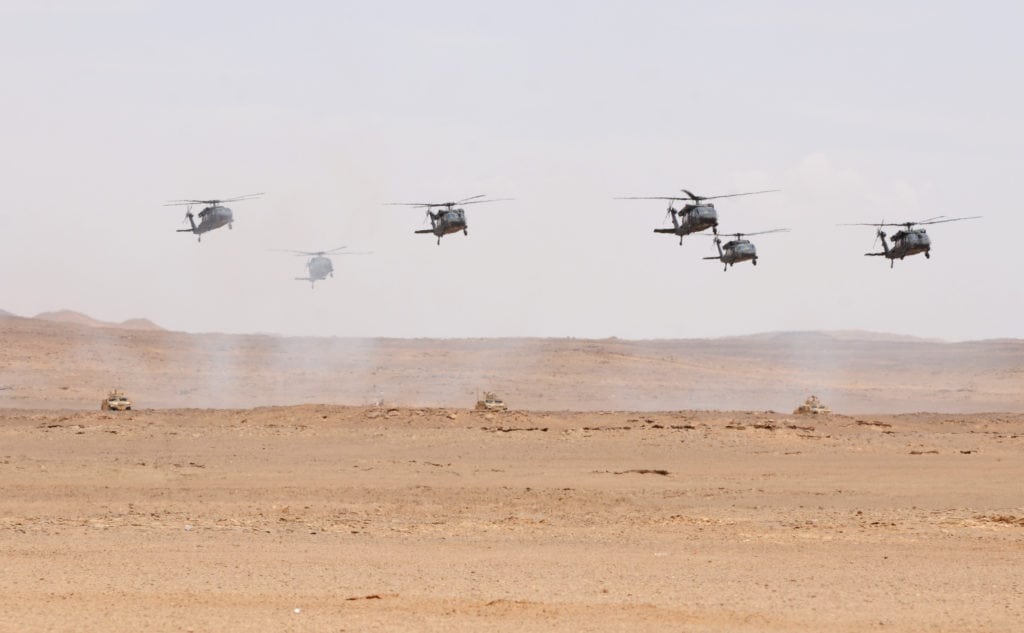
Six UH-60 Black Hawk Helicopters assigned to U.S. and Saudi Arabian forces approach the final objective during Friendship and Ironhawk 3, a two-week military-to-military exercise at the Tactical Training Center in Tabuk, Saudi Arabia, April 14.
The U.S. Army has tapped Lockheed Martin to develop a multi-modal sensor fusion (MMSF) testbed for rotorcraft, Lockheed Martin said. Worth $12 million, the contract is under the Army’s Night Vision and Electronic Sensors Directorate (NVESD).
“Current Lockheed Martin fire control systems enable pilots to own the night,” said Paul Lemmo, VP of fire control/SOF CLSS at Lockheed Martin Missiles and Fire Control. “Our next-generation MMSF technology will help them own the environment as well. Our work with NVESD and other [degraded visual environment] stakeholders will enable helicopter aircrews to operate more safely and effectively in even the most challenging visual environments.”
The solution Lockheed Martin is developing would enhance rotary-wing aircraft survivability, the company said. It would also enable pilots to navigate safely when GPS is unavailable and in other environments. MMFS algorithms blend data to generate real-time 3-D terrain maps of the area around the aircraft mission commanders and other platforms, the company said. Lockheed Martin said these capabilities could be applicable to both Army helicopters and future aircraft.
Under the new contract, Lockheed Martin is set to work for 40 months. The company said engineers would integrate government-furnished sensors in a reconfigurable, open-architecture testbed. Lockheed Martin would also work to refine multi-modal fusion techniques and real-time 3-D mapping, and to implement symbols and cues for pilot sensor displays.